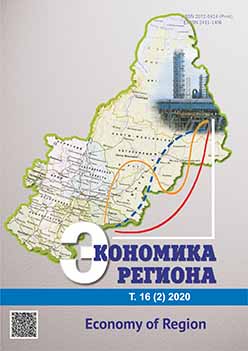ПРОСТРАНСТВЕННЫЕ ВЗАИМОСВЯЗИ И ЗАКОНОМЕРНОСТИ РАСПРОСТРАНЕНИЯ ТЕНЕВОЙ ЭКОНОМИКИ В РОССИИ
Spatial Correlation and Distribution of the Shadow Economy in Russia
Author(s): Ekaterina Nikolaevna Nevzorova, Anna Pavlovna Kireenko, Igor Anatolevich MayburovSubject(s): Economy
Published by: Институт экономики Уральского отделения Российской академии наук
Keywords: shadow economy; spatial econometrics; spatial autocorrelation; tax evasion; tax crimes; economic crimes; economic activities; spatial correlation; spatial patterns; Russian regions
Summary/Abstract: The paper aims to examine the spatial patterns of the distribution of the shadow economy in Russia, as well as to assess the correlation between the scale of the shadow economy and crime statistics. The methodology of spatial data analysis includes three steps. Firstly, we calculated the global Moran’s index and established its criteria of relevance. Secondly, we identified clusters of regions using Moran scatterplot. Thirdly, we conducted a correlation analysis of data on the shadow economy (for the period until 2016) and crime statistics (for the period until 2017, considering a time lag between a crime and its detection). The research results confirmed the correlation between the regional shadow economies. The correlated of the spatial cooperation of regions and the scale of the shadow economy is negative: a decrease in shadow economy leads to an increase in cooperation, and vice versa. In the considered period, spatial interaction gains more importance. The shadow economy is present in more than half of the Russian regions, located amid similar entities. Only a quarter of the regions are relatively unaffected by the shadow economies of their neighbours. Thus, we have established the configuration of spatial distribution of the shadow economy in Russia, demonstrating that such economic activity prevails in the western part of the country. This area is surrounded by the “transitional” zone where there is a risk of the spread of the shadow economy. Additionally, we identified isolated centres of shadow activity in Siberia and the Far East, as well as the zones of relative well-being. The findings demonstrate the difficulty in assessing the scale of the regional shadow economy using indirect and model methods due to the regions’ interaction. Moreover, the obtained results argue for the necessity of a targeted approach for creating policies aimed at preventing the regional shadow economy.
Journal: Экономика региона
- Issue Year: 16/2020
- Issue No: 2
- Page Range: 464-478
- Page Count: 15
- Language: Russian

